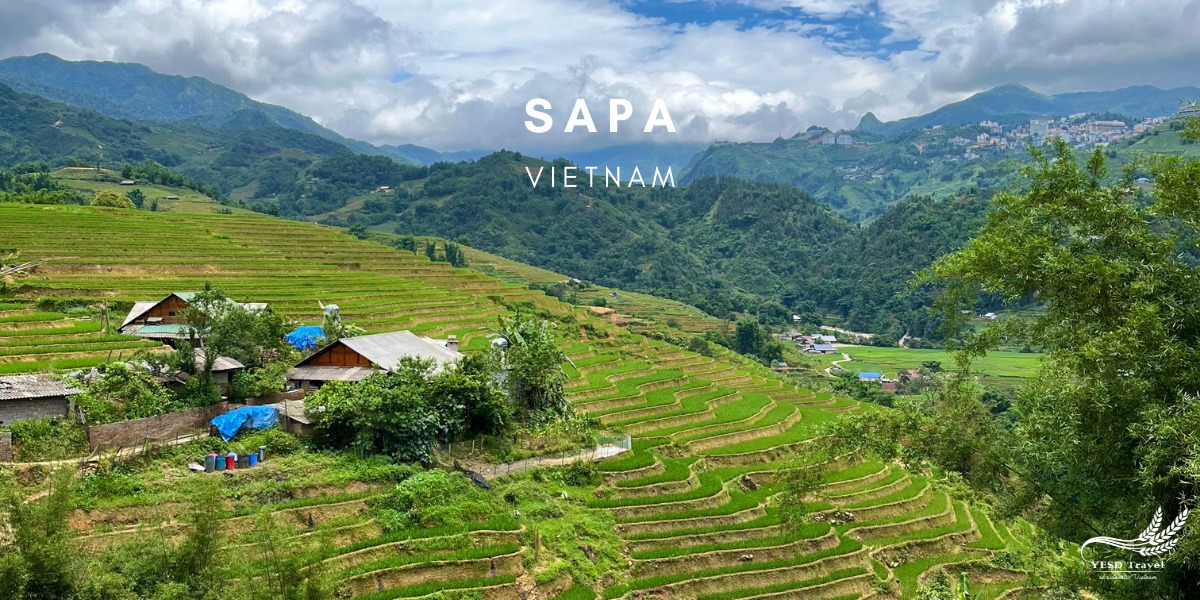
Discovering the Ethereal Beauty of Sapa in Vietnam – An Unforgettable Journey
Sapa in Vietnam is a captivating destination that enchants travelers with its breathtaking landscapes, rich culture, and diverse ethnic communities. Nestled in the northern highlands, this picturesque town offers an escape from the bustling urban life, inviting visitors to immerse themselves in nature and local traditions.
The Allure of Sapa’s Natural Wonders
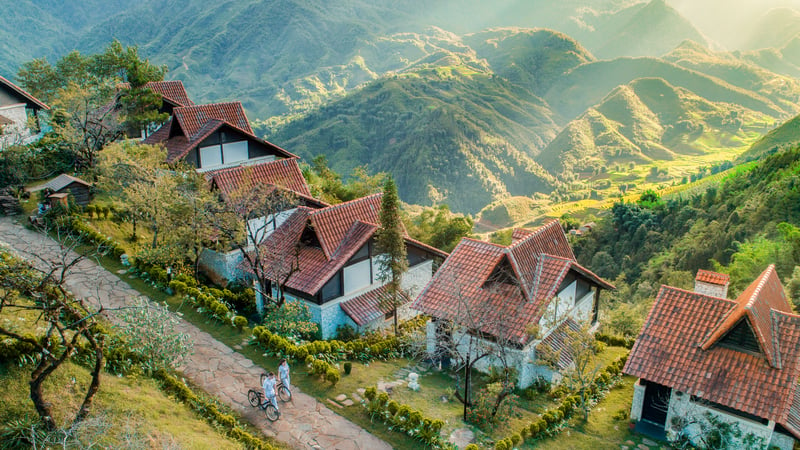
Sapa in Vietnam is renowned for its stunning natural beauty, characterized by terraced rice paddies, towering mountains, and vibrant floral blooms. The region’s topography creates a unique microclimate that supports a variety of plant species and lush vegetation.
The Magnificence of Terraced Rice Fields
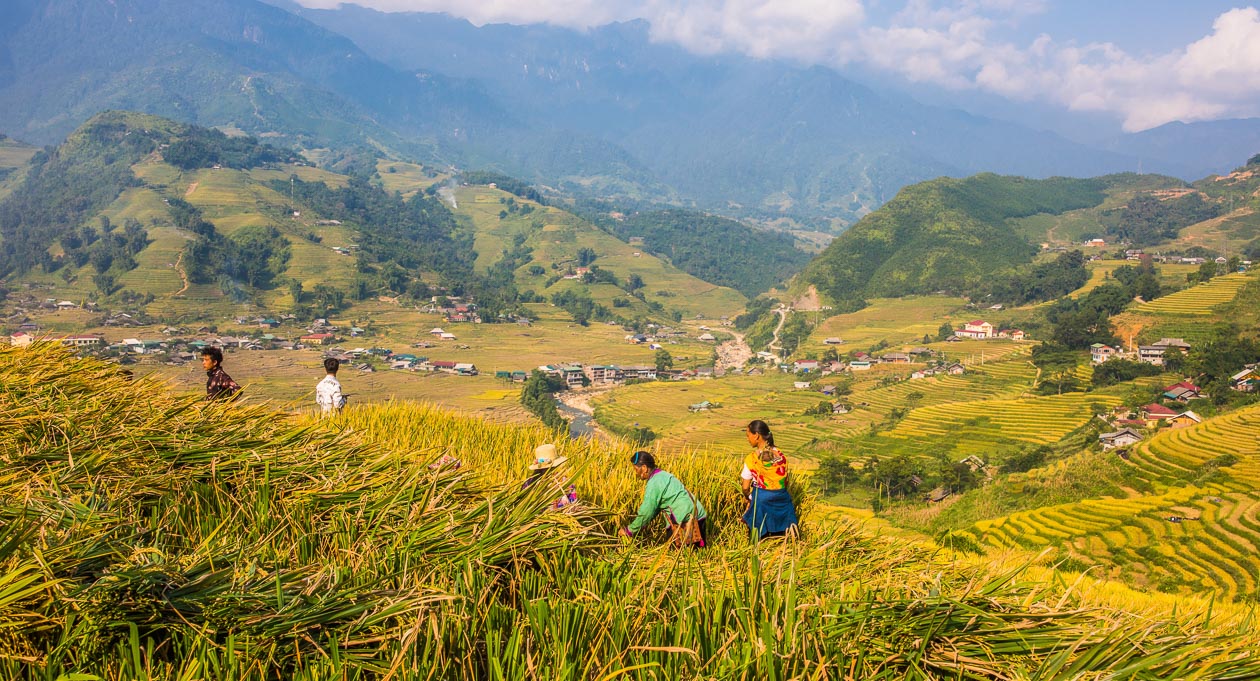
The terraced rice fields are perhaps the most iconic feature of Sapa’s landscape. These verdant staircases cascade down the hillsides, creating a mesmerizing patchwork of green that changes colors with the seasons.
Each terrace is carefully crafted by local farmers, who have perfected the art of rice cultivation over generations. As you trek through these fields, you’ll witness the meticulous work that goes into planting and harvesting, gaining insight into the agricultural practices that sustain the local economy.
In addition to their practical purpose, these terraces offer breathtaking views, particularly during sunrise and sunset when golden rays illuminate the landscape. The sight of the sun casting its glow on the dew-kissed rice paddies is truly enchanting and makes for unforgettable photographs.
Mount Fansipan – The Roof of Indochina

Another highlight of Sapa in Vietnam is Mount Fansipan, the highest peak in the Indochinese Peninsula. Standing at over 3,000 meters, it has become a popular attraction for trekking enthusiasts and adventure seekers.
Reaching the summit is no small feat, requiring endurance and preparation. Trekkers often embark on multi-day journeys through dense forests, past babbling streams, and alongside stunning vistas. Along the way, they encounter a diverse range of flora and fauna, including rare orchids and exotic birds.
The reward for such effort is nothing short of spectacular. From the summit, the panoramic views stretch across the valleys and mountains, offering a sense of accomplishment that is unparalleled. Visitors often describe the experience as transformative, encouraging a deep appreciation for both nature and personal resilience.
A Climate for Every Season
Sapa’s climate plays a significant role in shaping its stunning landscapes. The region experiences four distinct seasons, each offering a unique perspective on its beauty.
Spring is marked by vibrant blooms, as flowers like peach blossoms and plum trees adorn the hillsides. The fresh air carries the scent of new beginnings, and the landscape bursts with color.
Summer brings lush greenery, transforming the hills into a vibrant sea of foliage. This season is ideal for trekking, as the weather is warm and conducive to outdoor activities.
Autumn casts a golden hue over Sapa, as the rice fields turn amber during harvest time. It’s a feast for the eyes and a celebration of local agrarian culture, where communities come together to reap the fruits of their labor.
Winter, while cooler and occasionally misty, adds a mystical charm to the region. The mist envelops the mountains, creating an ethereal atmosphere that feels almost otherworldly.
Cultural Richness of Sapa
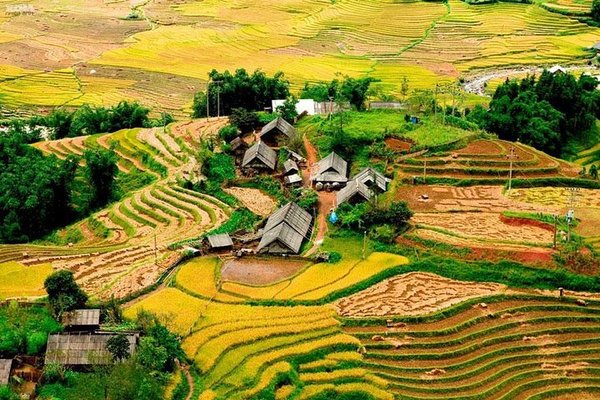
Sapa in Vietnam is not only a visual delight; it also boasts a wealth of cultural diversity. Home to various ethnic minority groups, the area offers a rich tapestry of traditions, customs, and lifestyles that have been preserved through centuries.
The Ethnic Mosaic of Sapa
The most notable ethnic groups in Sapa include the Hmong, Dao, Tay, and Giay peoples. Each group possesses its own language, attire, and practices, contributing to the vibrant cultural mosaic of the region.
Visiting local villages provides an incredible opportunity to learn about these communities. For instance, the Hmong people are known for their intricate textiles and colorful garments, which reflect their history and identity. Travelers are often welcomed into homes, where they can experience traditional cooking, music, and storytelling.
This interaction fosters mutual respect and understanding, allowing visitors to step into the shoes of the locals. It’s a chance to witness how age-old traditions coexist with modern influences, creating a dynamic cultural landscape that continues to evolve.
Festivals and Celebrations
The festivals in Sapa serve as a testament to the richness of its cultural heritage. Events such as the Lunar New Year or the “Tet” festival showcase traditional music, dance, and rituals that bring communities together.
During these festivities, locals don their finest attire, and the streets come alive with vibrant colors, laughter, and joy. Guests are encouraged to participate, immersing themselves in the celebratory atmosphere. Sharing food, songs, and stories strengthens bonds between visitors and residents, creating lasting memories.
Additionally, Sapa hosts a variety of agricultural fairs that emphasize the importance of farming in the lives of its inhabitants. These events spotlight traditional practices and innovations, highlighting the connection between culture, community, and the land.
Sustainable Tourism and Community Empowerment
As tourism grows in Sapa, there is a concerted effort to ensure that this development is sustainable and benefits the local communities. Many tour operators are committed to responsible tourism, promoting ethical practices that empower indigenous populations.
Workshops and training programs focus on enhancing skill sets among local artisans, helping them sell their crafts to tourists while preserving their cultural heritage. By fostering direct connections between travelers and local entrepreneurs, tourism becomes a tool for empowerment rather than exploitation.
Travelers are increasingly seeking authentic experiences, and Sapa offers a plethora of opportunities to engage with local cultures. This not only enriches the visitor’s experience but also contributes to the socio-economic development of the region.
Adventures and Activities in Sapa
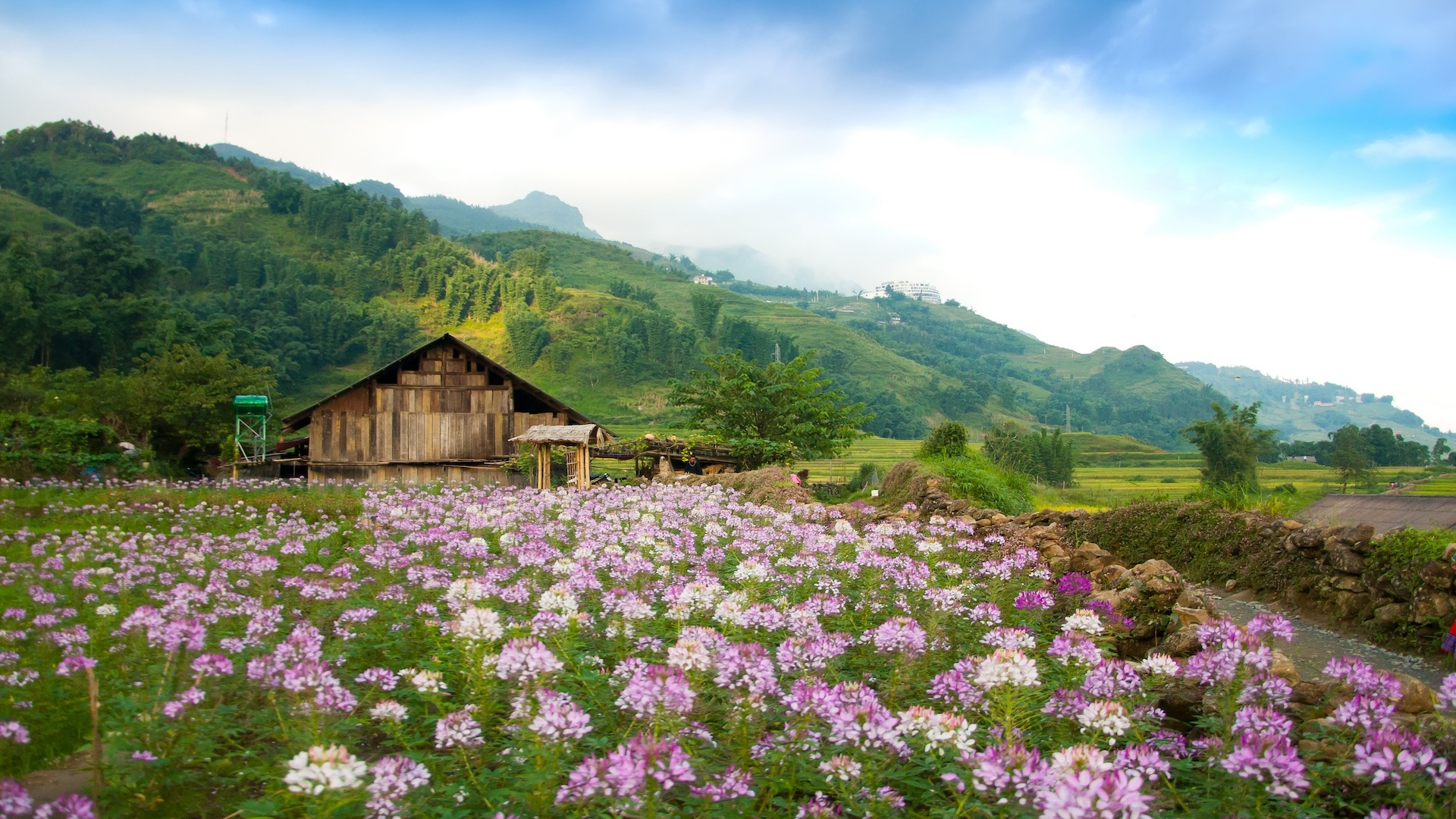
For those seeking adventure, Sapa in Vietnam presents a myriad of activities that cater to both thrill-seekers and leisurely explorers. Whether trekking through the mountains or indulging in culinary delights, there’s something for everyone.
Trekking Trails for Every Level
Sapa is famous for its extensive network of trekking trails, ranging from easy walks suitable for families to challenging hikes for seasoned adventurers. Popular routes lead through lush valleys, past shimmering waterfalls, and into remote villages, providing glimpses into everyday life.
Engaging with local guides not only enhances the trekking experience but also supports the community. These guides share invaluable knowledge about the terrain, flora, and fauna, enriching the journey with stories and insights.
One popular trek leads to the village of Cat Cat, where visitors can observe traditional handicrafts and witness the daily lives of the Black Hmong people. Another rewarding trail takes trekkers to the scenic Muong Hoa Valley, famous for its stunning rice terraces and ancient stone carvings.
Culinary Experiences That Delight
Sapa is also a haven for food lovers, offering a delightful array of culinary experiences that reflect its diverse cultural influences. Traditional dishes like “thang co” (a savory horse meat soup) and grilled skewers can be found in local eateries, providing a taste of authentic flavors.
Cooking classes are available for those eager to learn how to prepare these dishes themselves. Participants gain insight into local ingredients, cooking techniques, and the significance of each meal within the community.
Moreover, the region’s cool climate is conducive to growing various fruits and vegetables, resulting in fresh produce that enhances the dining experience. Exploring local markets introduces visitors to a bounty of seasonal delights, from fragrant herbs to exotic fruits, making every meal a unique adventure.
Eco-Tourism and Nature Exploration
Sapa’s commitment to eco-tourism allows visitors to connect with the environment while preserving its natural beauty. Guided tours focus on sustainable practices and conservation efforts, educating travelers about the delicate ecosystems that thrive in the region.
Nature enthusiasts can explore nearby national parks, home to abundant wildlife and diverse habitats. Birdwatching, photography, and plant identification are just a few activities that allow visitors to appreciate the area’s ecological richness.
In recent years, initiatives have emerged to plant trees and restore degraded areas, inviting tourists to participate actively in conservation efforts. This hands-on approach fosters a deeper connection to the land and encourages awareness of environmental issues.
FAQs About Sapa in Vietnam
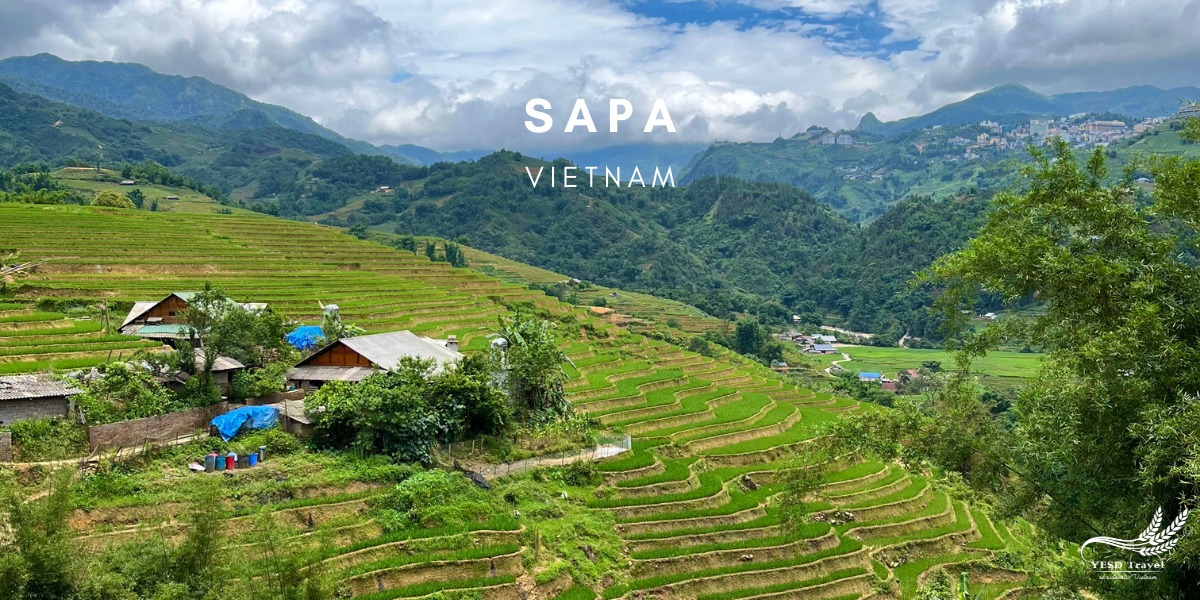
What is the best time to visit Sapa in Vietnam?
The best time to visit Sapa is from March to May and September to November. During these months, the weather is mild, and the landscapes are particularly beautiful, showcasing blooming flowers in spring and ripe rice fields in autumn.
Do I need a guide for trekking in Sapa?
While some trails are well-marked and can be navigated independently, hiring a local guide is highly recommended. They provide valuable insights into the area’s culture, history, and ecology, enhancing your overall experience.
Are there any cultural etiquette tips for visiting Sapa?
When visiting local communities in Sapa, it’s essential to be respectful of cultural norms. Always ask for permission before taking photos of people, avoid barging into homes, and be open to learning about their customs.
Is Sapa suitable for families with children?
Yes, Sapa is suitable for families, offering various activities for children. Easy trekking routes, cultural interactions, and opportunities to learn about local customs make it an enriching experience for all ages.
Can I find accommodations in Sapa?
Sapa offers a wide range of accommodations, from budget hostels to luxury hotels. Many options provide stunning views and easy access to trekking trails, ensuring a comfortable stay amid the breathtaking scenery.
Conclusion
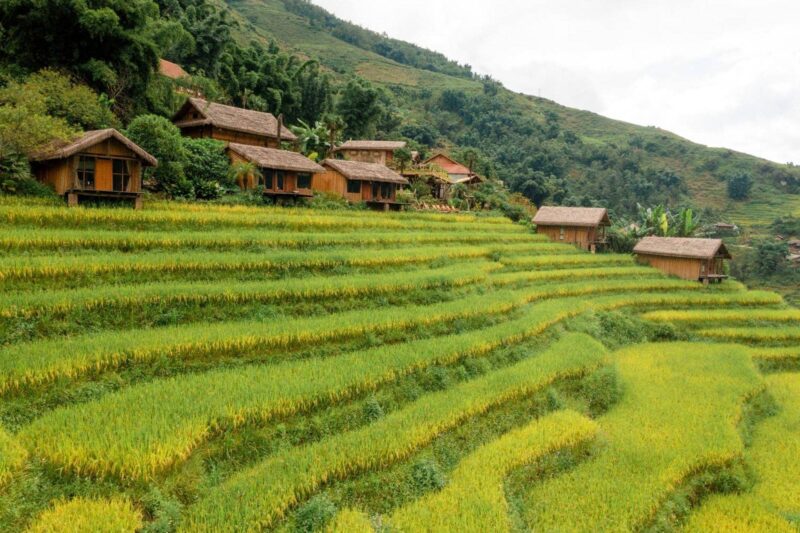
Sapa in Vietnam is more than a travel destination; it is a journey into a world of stunning natural beauty, rich culture, and heartfelt community connections. As you explore its terraced rice fields, interact with its diverse ethnic groups, and embrace countless adventures, you will find yourself captivated by the allure of this remarkable region.
From trekking up Mount Fansipan to indulging in local delicacies, every moment spent in Sapa leaves an indelible mark on the heart and soul. As travelers seek authentic experiences, Sapa stands out as a beacon of sustainability and cultural pride, inviting all to discover its hidden gems and profound beauty.
How to Get a Vietnam Visa to Travel to Sapa
If you’re planning to visit Sapa, Vietnam, you may need a Vietnam visa depending on your nationality. Here’s a step-by-step guide:
1️⃣ Check If You Need a Visa
- 45-Day Visa Exemption: Citizens of 17 countries (Germany, France, Italy, Spain, UK, Russia, Poland, Czech Republic, Switzerland, Denmark, Sweden, Norway, Finland, Belarus, Japan, South Korea, Mongolia) do not need a visa for stays up to 45 days.
- 14-30 Day Visa Exemption: Citizens of Southeast Asian countries can enter Vietnam without a visa for stays between 14 to 30 days (depending on nationality).
- All other nationalities must apply for a visa before traveling.
2️⃣ Choose Your Vietnam Visa Type
- E-Visa:
- Valid for 90 days (single or multiple entry).
- Best option for tourists.
- Apply online via the official government site or VisaOnlineVietnam.
- Visa on Arrival (VOA):
- Requires an approval letter before arriving in Vietnam.
- Stamp the visa upon landing at major airports.
- Embassy/Consulate Visa:
- Apply at a Vietnamese embassy or consulate in your home country.
- Recommended for long-term stays or work visas.
3️⃣ Apply for Your Vietnam Visa
- E-Visa Processing Time:
- Normal: 3-5 working days.
- Urgent: 2-3 working days.
- Emergency: 4-8 working hours (extra fee applies).
- Visa on Arrival Processing Time:
- Approval letter within 1-3 business days (faster service available).
4️⃣ Travel to Sapa from Hanoi
Once you arrive in Hanoi (Noi Bai International Airport), you can travel to Sapa by:
🚆 Overnight Train: 8 hours to Lao Cai, then 1-hour drive to Sapa.
🚌 Luxury Bus: 5-6 hours direct from Hanoi to Sapa.
🚗 Private Car: More expensive but offers a comfortable journey.
Need Help?
For fast and reliable visa processing, contact VisaOnlineVietnam:
📍 Website: VisaOnlineVietnam
📧 Email: [email protected]
📞 WhatsApp: (+84) 968 18 77 18
📞 USA Hotline: +1(972)-666-0676
Plan ahead and enjoy your adventure in Sapa, Vietnam! 🌿🏔️

